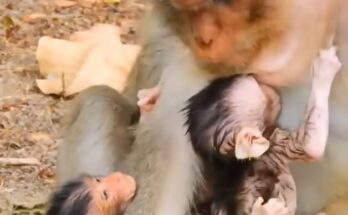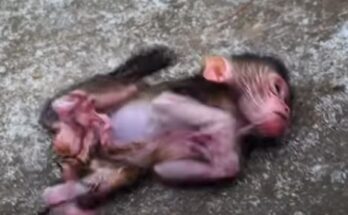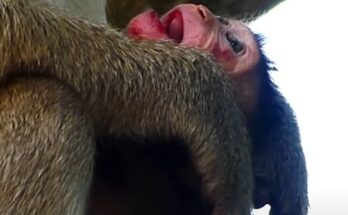Deep in the dense canopies of rainforests and the rugged cliffs of mountainous landscapes, wild monkeys navigate a world that is often misunderstood by humans. While they are frequently portrayed as playful, mischievous, or even comical creatures, the emotional depth of these intelligent primates remains largely unrecognized. Their lives, though filled with moments of joy and connection, also carry a hidden burden—one of loss, longing, and even sorrow. The tears in the trees are not just drops of rain, but echoes of the quiet sadness that wild monkeys endure.
The Emotional Depth of Monkeys
Monkeys, like their great ape cousins and humans, are deeply emotional beings. Scientific studies have shown that they experience a range of feelings, including joy, jealousy, fear, and grief. Their social structures are intricate, based on bonds that take years to form. When these bonds are broken—by death, separation, or human intervention—monkeys exhibit signs of distress akin to mourning.
Observations of different monkey species reveal strikingly human-like reactions to loss. For example, chimpanzees and baboons have been observed carrying the bodies of their deceased infants for days, unwilling to part with them. In some cases, they groom their lifeless young as if trying to wake them. This behavior suggests a profound inability to immediately accept death, something heartbreakingly familiar to humans.
Loneliness in the Wild
Despite living in groups, some monkeys experience deep loneliness. Low-ranking individuals in primate hierarchies often face neglect or even bullying. They may be excluded from social grooming, ignored during play, or even pushed away from food sources. This social rejection can lead to increased stress and a noticeable change in behavior, such as excessive self-grooming or withdrawal from the group.
For some, isolation comes from losing a lifelong companion. Monkeys form close friendships, much like humans do, and the loss of a friend can leave an individual adrift. Scientists studying vervet monkeys have found that when one of their close social partners dies, the grieving monkey will often sit alone, become less active, and show visible signs of distress.
The Impact of Human Activities
The sadness of wild monkeys is not solely due to natural causes. Human actions—deforestation, habitat destruction, and poaching—have inflicted immense suffering on primate populations. When forests are cut down, entire monkey families lose their homes. They are left to wander unfamiliar, fragmented landscapes, searching for food and shelter in an increasingly hostile world.
Beyond habitat loss, the illegal pet trade rips young monkeys from their mothers. In markets and cages, these stolen infants cry for their lost families, their distress evident in their frantic movements and longing gazes. Even in sanctuaries, rescued monkeys often struggle to reintegrate into natural social structures, having been robbed of the chance to learn survival skills from their mothers and elders.
A Silent Plea for Empathy
Wild monkeys do not weep in ways humans recognize, but their sorrow is undeniable. Their mournful calls, withdrawn behaviors, and desperate attempts to cling to the past all speak of a hidden sadness. The tears in the trees belong not just to the rain, but to these sentient beings, whose hearts break in ways so similar to our own.
Understanding their emotions calls for a greater responsibility to protect them, to preserve their habitats, and to acknowledge that their lives are far more complex than mere survival. In doing so, we might finally hear the quiet sorrow carried in the rustling leaves—the hidden sadness of wild monkeys.


